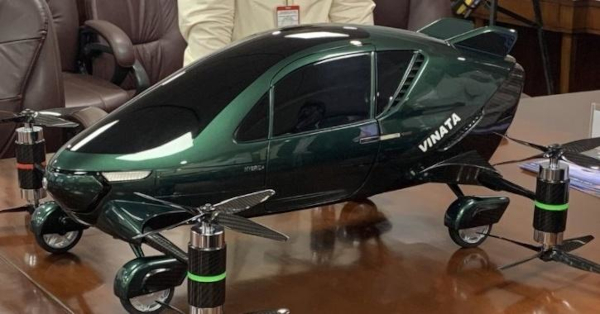Whenever we’ve thought about the future of this world, one thing has always been a part of our imaginations — flying cars. And while there are several startups working on them, none are being used as commonly as we’d want them to.
However, it looks like Asia could soon get its first Hybrid Flying car, developed by a startup from Chennai.
Dubbed Vinata Aeromobility, it is expected to unveil its autonomous hybrid flying car to the world next month on October 5, at one of the most popular aviation exhibitions — Excel, in London.
Unveiling the concept for the vehicle, Civil Aviation Minister, Jyotiraditya Scindia said in a statement, “Delighted to have been introduced to the concept model of the soon-to-become Asia’s First Hybrid flying car by the young team of Vinata AeroMobility. Once this takes off, flying cars would be used for transporting people & cargo, as well as for providing medical emergency services.”
Once this takes off, flying cars would be used for transporting people & cargo, as well as for providing medical emergency services: Civil Aviation Minister Jyotiraditya Scindia (2/2) — ANI (@ANI) September 20, 2021
Founded by Yogesh Ramanathan, the company is based out of Chennai. It comprises leading space scientists from ISRO, Dr A.E. Muthunayagam as their principal advisor. Also in the team as a UAM (Urban Air Mobility) advisor is Dawn Zoldi, a retired US Air Force colonel with over 28 years of experience.
The Urban Air Mobility Vehicle
The autonomous flying vehicle uses AI to take its passengers from one place to another. It essentially looks like a car atop a drone with a quad-copter. The cabin gets luxurious seating with a panoramic window canopy, offering a 360-degree view.
The flying vehicle will be capable of vertical take-off and landing using its coaxial quad-rotor. It weighs a total of 1,100 kilograms and can handle a takeoff weight of 1,300 kilograms. The rotors would be powered using an electric battery. On the streets, the car would be powered using biofuel.
It can fly at a speed of 100 to 120 kilometres per hour and can carry two passengers at the same time, with a maximum flight time of 60 minutes at a maximum height of 3,000 feet.
The vehicle also gets an ejection parachute as well as airbags inside the cockpit for additional safety.
Source: India Times
You may also like
-
Trade Connect E-platform For Exports Is Single Window, Fast, Accessible And Transformational: Shri Piyush Goyal
-
Dot Simplifies Approval Processes For Telecom Licenses And Wireless Equipment
-
Coal Production and Supply Trends on Positive Trajectory
-
Union Minister To Release Booklets On Promotion Of Indigenous Species & Conservation Of States Fishes
-
2nd India-Japan Finance Dialogue held in Tokyo on 6th September, 2024
